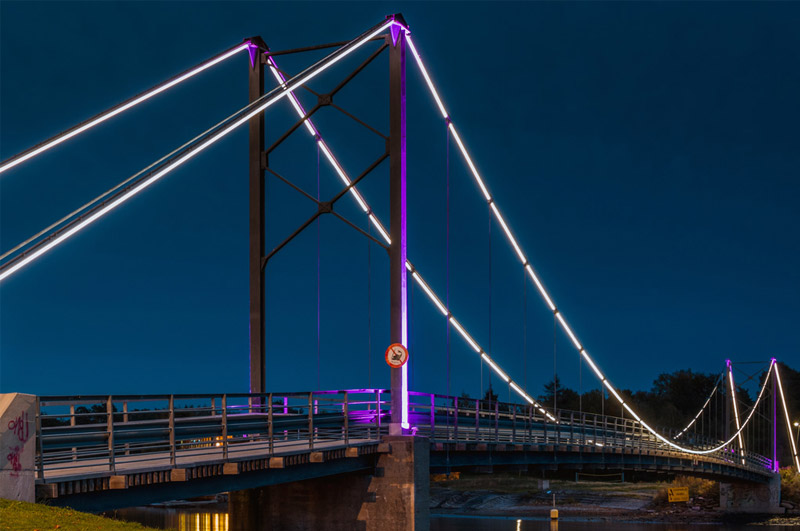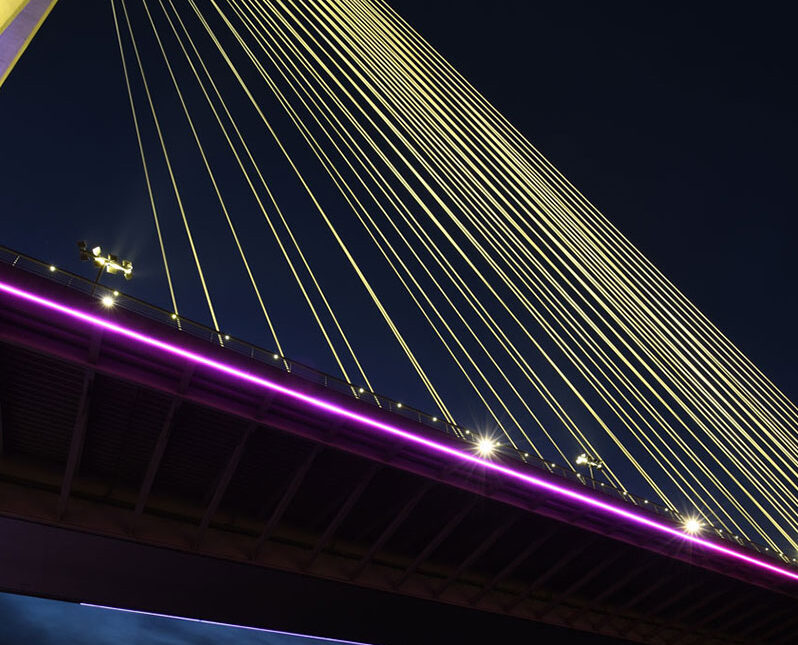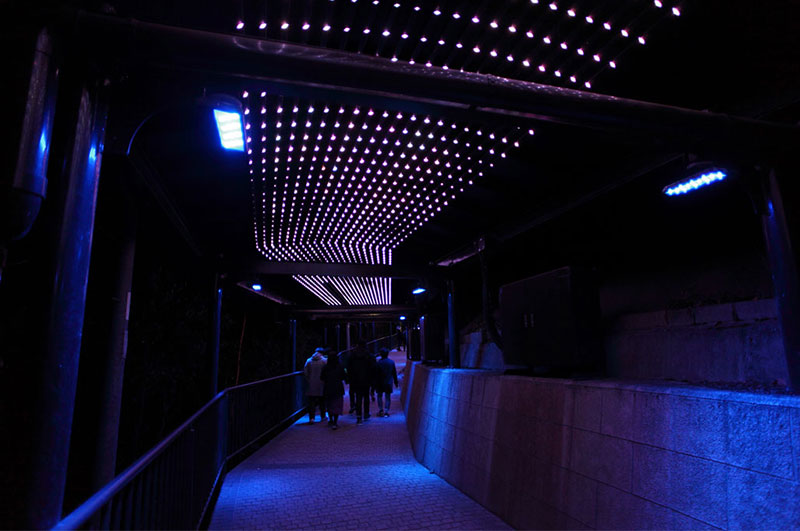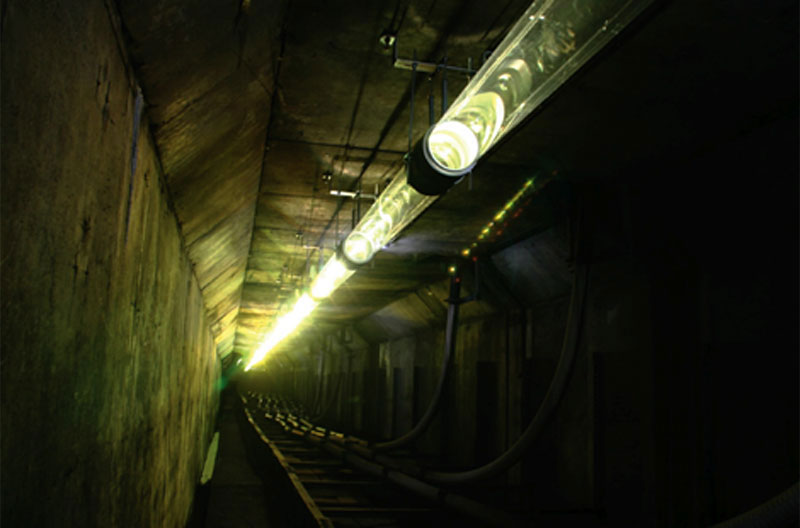- USA: 480 454 8756
- AUS: 1300 762 299
Having correct lighting in and around large infrastructures adds to the safety and security of the area. Dark spots, brightness and lighting color temperature play an essential role in preventing accidents and promoting a sense of security.
Daylighting, LED and Fiber optic lighting are all technologies that play an important role; Sunlight for plant growth, LED for night-time visibility and fiber optic lighting for perimeter and ambient lighting. When combined, the correct infrastructure lighting will provide a more welcoming and friendly environment and enhance the visual aesthetics of a structure.

Fiber optic linear lighting enhances bridges with a neon type of effect along the arc or suspenders of the bridge, the outer perimeter of the deck or to highlight the towers. The key benefit to fiber optic linear infrastructure lighting is there are no globes or LEDs in the cable and therefore do not require the maintenance and replacement issues associated with LED linear lighting.
Fiber cables do not have an IP rating as they do not carry or transmit any electricity. A clear outer sheath protects the inner fiber cores from UVs and the rain. The track mount that houses the fiber cable does not act as a heat sink and does not require anodizing.

LightEFX utilizes high-spec fiber cables and a patented technology process maximizing the fiber cables' brightness. Light output levels from the linear fiber cable depend on the type of light source used, the overall length and diameter of the fiber cable, and if any lensing is used. Comparisons of fiber optic lighting with LED lighting are not the same as fiber optics transmits light from a light source, whereas LED lighting is a point of source.
Illuminators are placed at either ends of the fiber cable to create a more even flow of light. The distance of the fiber cable between each illuminator is up to 50 meters which can be continued in series. Illuminators are stored in a conveniently accessible location for maintenance and servicing when and if required.
Illuminator technology has benefited from metal halide lamps to LEDs with the first big game changer and that is lamp replacement intervals. A metal halide's life span is either a 6,000-hour life lamp or a 12,000-hour lamp life. LEDs have increased the light source life span up to 40,000 hours and provided greater control with full dimming capabilities and color temperature choice.

End-point fiber optic lighting can be downlighting or uplighting, producing an ambient light for highlighting features, landscapes or pathways. Light is delivered from the illuminator and distributed through a network of fiber cables with non-powered fittings attached at the fiber cable's end.
Fiber cables do not have an IP rating as they do not carry or transmit any electricity. The inner fiber cores are encased with a non-clear jacketed UV-protected sheath and can be housed in a mounting track or conduit.
LightEFX utilizes high-spec fiber cables and a patented technology process maximizing the fiber cables' brightness. Light output levels from the endpoints depend on the type of light source used, the length and diameter of the fiber cable, and if any lensing is used. Comparisons of fiber optic lighting with LED lighting are not the same as fiber optics transmits light from a light source, whereas LED lighting is a point of source.
Illuminators are placed at one end of the fiber cables, referred to as the common end, where all the fibers meet into the illuminator. The number of fiber cables that can be distributed from the illuminator is dependent on the overall amount of endpoint fittings. Fittings can take a single strand fiber cable or multiple strand fiber cable depending on how much light is desired. Illuminators can take up to 1200 fiber strands at 0.75mm in diameter. The fiber cable's length can be as long as 100 meters, dependent on the light output desired.
Non-powered fittings are attached at the end of the fiber cables, no globe or LEDs are in the fitting as the light is delivered from the fiber cable. Bare fibers can also be used at the endpoint, creating a starlight feature.
Without any globes or LEDs at the endpoint and illuminators conveniently located, enables a low-cost maintenance system with the only light being produced coming from the light source of the illuminator.

Infrastructure lighting for usable areas under bridges in urban environments is not always an easy task for designers. Shadowing of the bridge itself raises a number of issues and then take into account neighboring buildings and structures.
Providing full-spectrum sunlight to the underneath of bridges creates usable and safer environments. Public accessibility, bicycle and walking paths, life to waterways and building sustainable green environments are all possible when sunlight is available.
Delivering full-spectrum, glare-free sunlight under bridges and aqueducts can be achieved without significantly altering the structure's design. Maintaining line of sight to the sun, SunBeamers direct sunlight either directly or via mirrors and lenses to areas where required.
The SunBeamer system will autonomously track the sun providing sunlight throughout the day into the area.